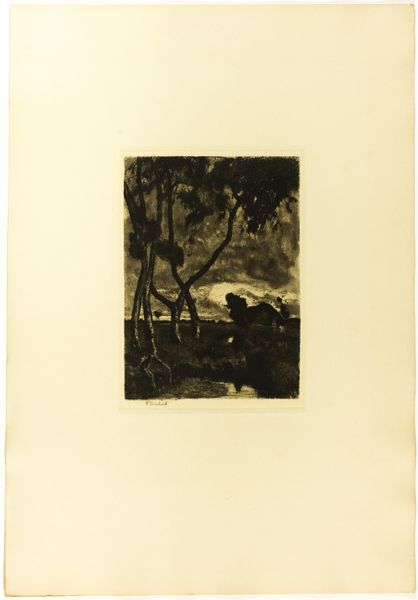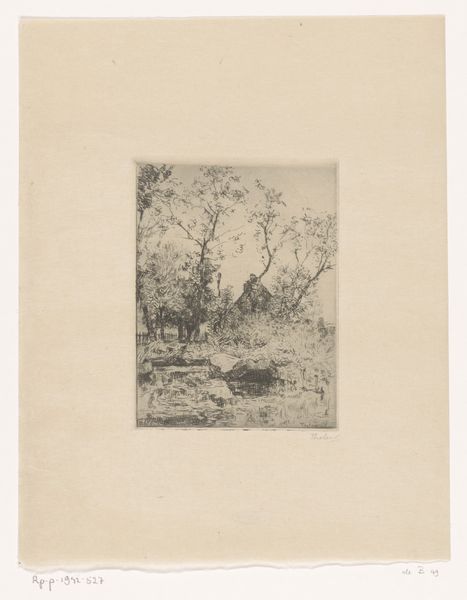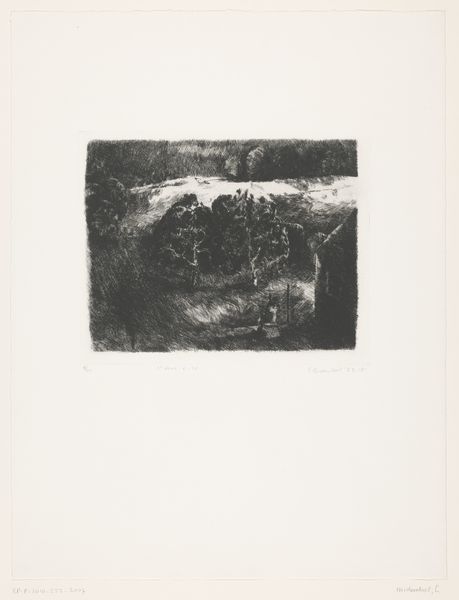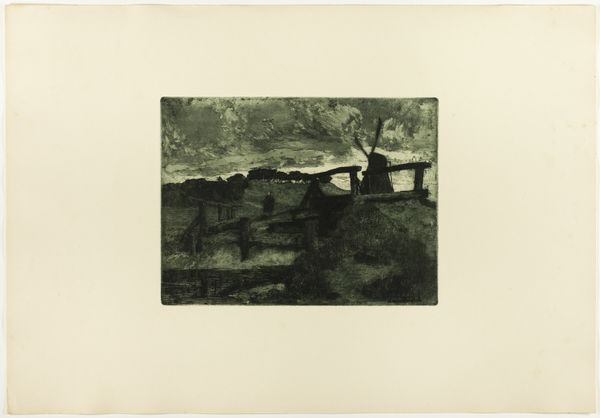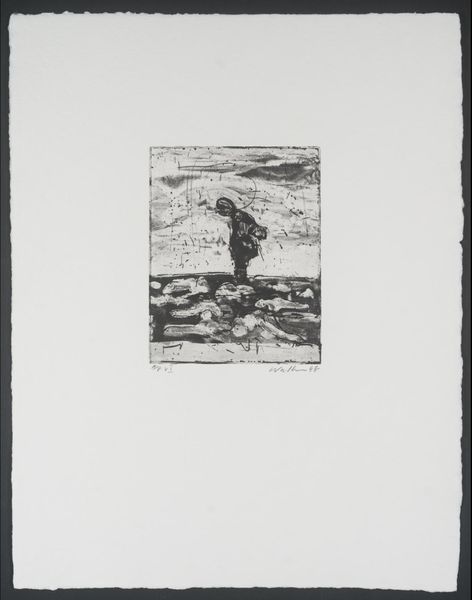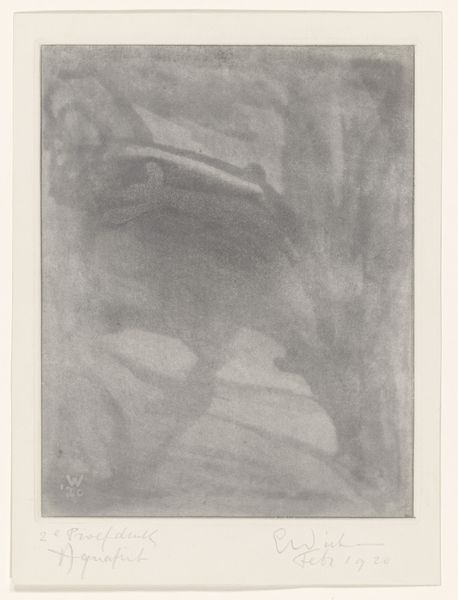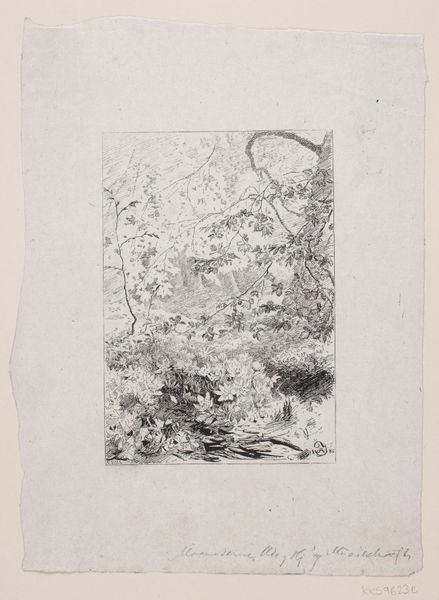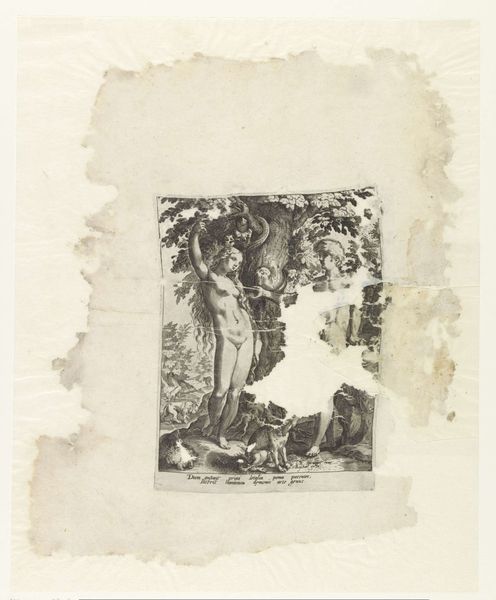
drawing, print, etching, paper
#
drawing
# print
#
etching
#
landscape
#
paper
Dimensions: 209 × 140 mm (plate); 507 × 351 mm (sheet)
Copyright: Public Domain
Curator: Welcome. We're looking at "Blacksmith," an etching and print by Fritz Overbeck, dating to 1895. It’s a small piece, rendered on paper. Editor: Intimate is the first word that comes to mind. The close-knit composition pulls me in. What catches my eye, particularly, is the texture and contrast in such a modest scale. It seems incredibly dark, perhaps oppressive, given the limited range of values. Curator: That darkness speaks, I think, to the traditional symbolism of the blacksmith. In many cultures, the blacksmith is seen as a figure of transformation and power, shaping raw materials with fire and force. They represent creation, but also danger. Is this blacksmith hero, god, or simply a symbol? Editor: An interesting dichotomy. Though I find myself resisting easy associations, the scene itself, viewed formalistically, employs quite dark tonalities offset by contrasting shades, but where does it resolve itself? Where do you land? I hesitate to commit to that transformative narrative in this instance. Curator: Perhaps I'm imposing meaning, yet I can't help but feel the weight of societal memory here. This blacksmith, etched with such starkness, doesn’t just hammer metal; he seems to be hammering at the human spirit itself. The stooped figures convey more fatigue than purpose. It's an almost gothic inversion. The figure is alone near death amongst barren land. Editor: It’s difficult to ignore how the limited tonal range constricts a complete spatial experience, especially along the base— the contrast gives way. However, this compression forces you to accept it’s indeed a crafted reality versus a natural or representational likeness. It emphasizes its very objecthood. I read Overbeck not necessarily inverting, as much as calling forth material artifice to suggest, perhaps, this gothic tone. Curator: It becomes something of a mirror, reflecting anxieties of its time but also holding the enduring image of creation and destruction together. The work becomes a palimpsest of social and spiritual ideas. Editor: Right—it shows that art isn’t merely reflective. Rather, it refracts and filters the world to expose the structures that create meaning. And the texture! That's what remains for me as I ponder those complex layers that you pointed out. Curator: For me, it is the human endeavor itself distilled through time and memory that makes "Blacksmith" more than meets the eye. A visual tool, like any work, meant to open some question that allows viewers, then and now, to pause in the landscape and reflect on human conditions.
Comments
No comments
Be the first to comment and join the conversation on the ultimate creative platform.
